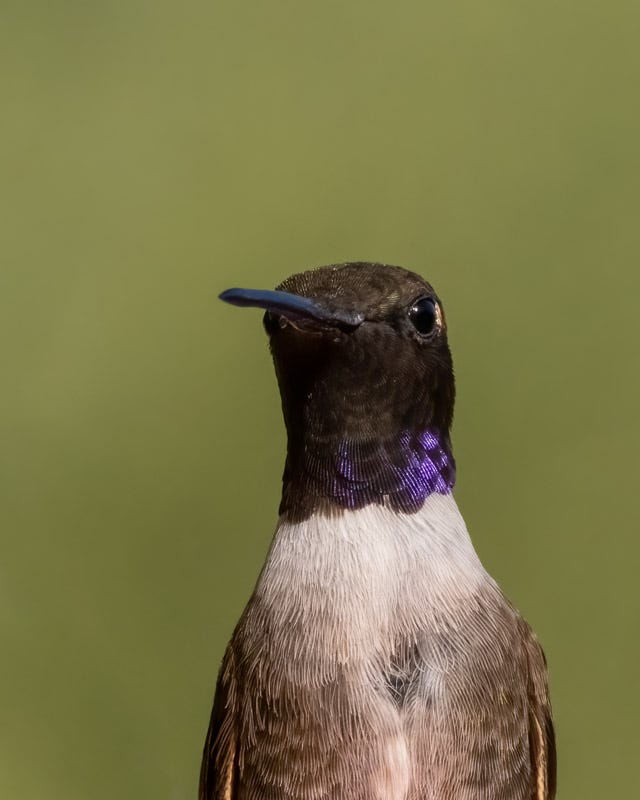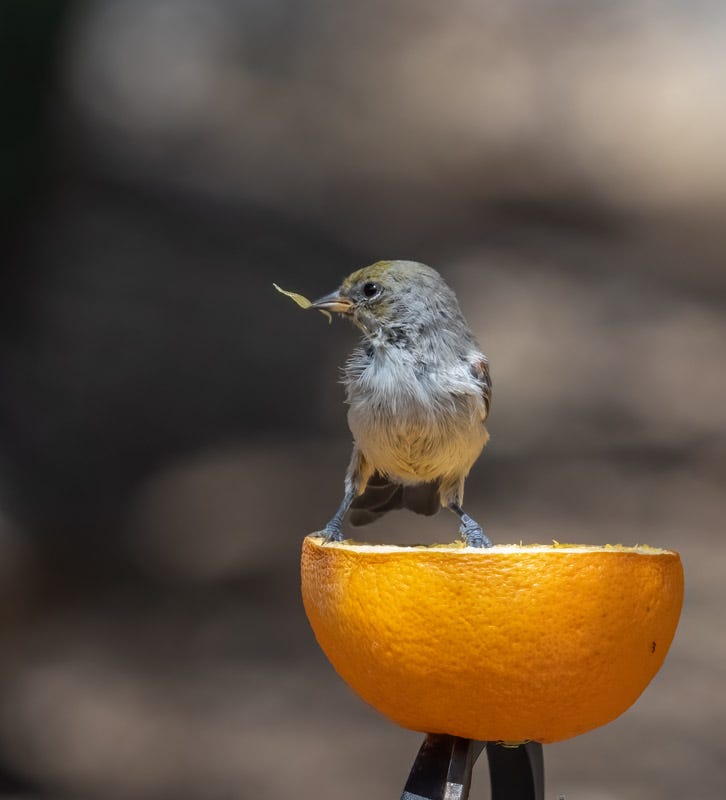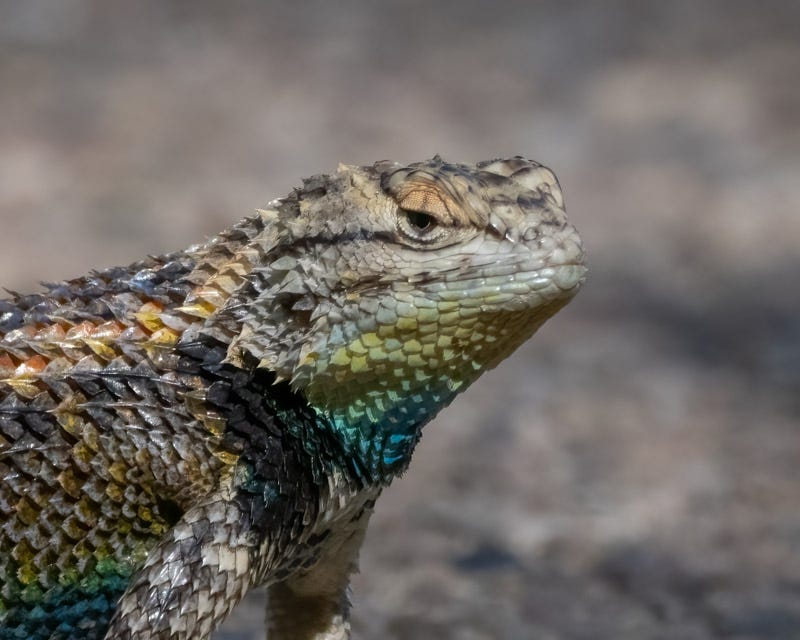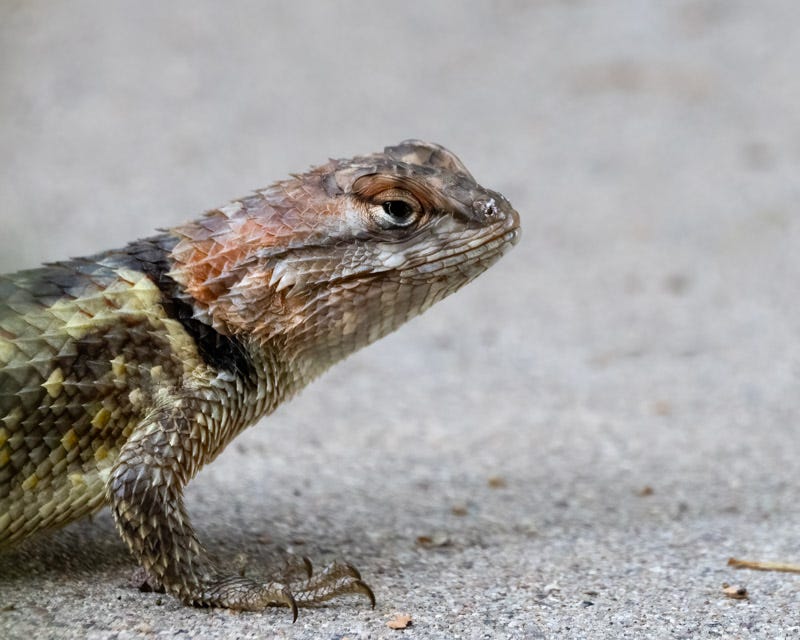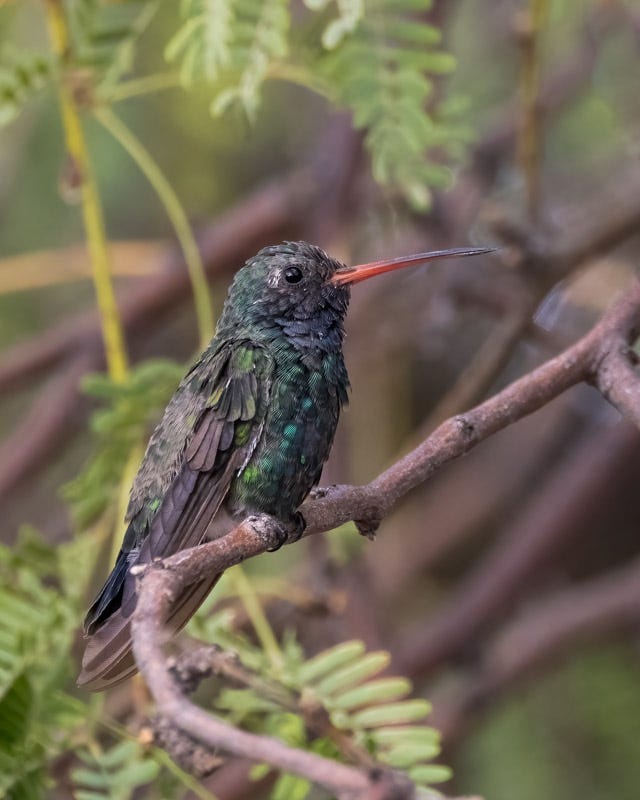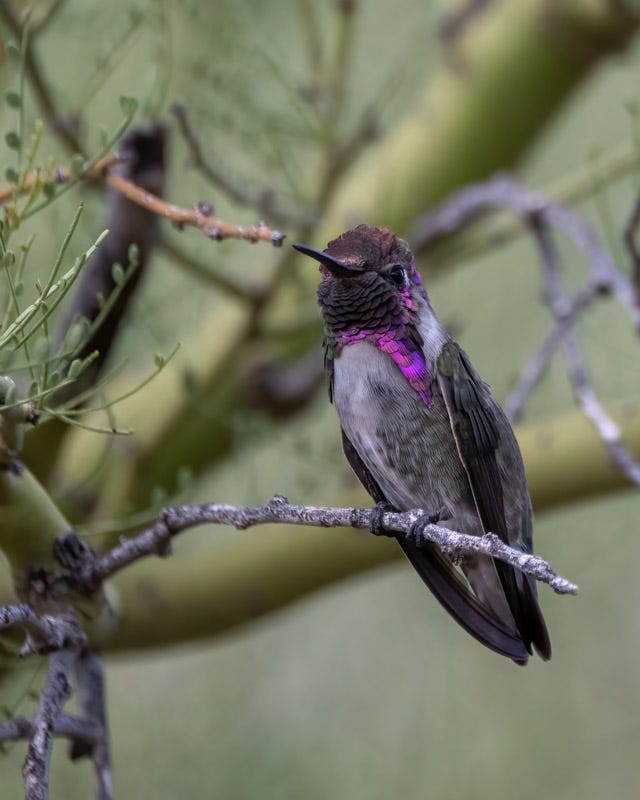The Last Shots (for now) from the Back Porch
Sept. 15, 2024:
I'm still spending lots of time on my back porch and not yet venturing out far in the world, but after the photos below my next email will share some photos that I've taken around the area prior to my knee surgery. One new hummingbird that has been spending time in my yard during this migration season is a Black-chinned Hummingbird. I rarely see this species in my yard. Black-chins summer throughout much of the western states in a wide range of habitats. They have a black throat with a strip of iridescent purple at the edge of the black throat that is only visible when the light hits it just right.
Here are some facts about Black-chinned Hummingbirds from the allaboutbirds. org site: "At rest, its heart beats an average of 480 beats per minute. On cold nights they go into torpor, and the heart rate drops to 45-180 beats per minute. Breathing rate when resting is 245 breaths per minute at 91° F; this rises to 420 breaths per minute when temperature drops to 55° F. Torpid hummingbirds breathe sporadically."
A young Verdin was snacking on a fresh orange I set out. Its head is just beginning to grow in the yellow feathers it will have as an adult.
Gila Woodpeckers are the most common in the Tucson area. Ladder-backed Woodpeckers, like the male below, are closely associated with the cactus and mesquite in the arid deserts of the Southwest. Ladder-backs are 2-3 inches smaller than the Gila Woodpeckers and they have a noticeable black-and-white ladder pattern on their backs. Male Ladder-backs have a red cap.
Compared to the loud Gila Woodpeckers in the desert, Ladder-backed Woodpeckers are much more quiet and less conspicuous. You might find them if you are aware of their brief call. Some people call the sound a "peek": https://www.bird-sounds.net/ladder-backed-woodpecker/
It was fun to see a juvenile male House Finch at my water feature. Adult male House Finches usually have a very red head and breast. Birds cannot make red or yellow feathers directly. The color comes from pigments in the foods they eat. The more pigment in the foods, the brighter the color of the feathers. This juvenile House Finch is just beginning to get in his adult plumage.
Lizards have been common throughout the summer. I have Desert Spiny Lizards in my yard. These are large lizards and the male can have a bluish patch under its throat. His scales are pointy, thus leading to the "spiny" name.
Here is a female Desert Spiny Lizard. Note the very different color on her. The Sabino Canyon Volunteer Naturalists let us know about the more common lizards in our area: https://sabinonaturalists.org/wp-content/uploads/Lizards-of-Sabino-Canyon.pdf
And of course, the 'regular' hummingbirds are still ever present. Here is a nice male Broad-billed hummingbird waiting his turn at the feeders.
Here is a nice Costa's Hummingbird awaiting his turn at the feeders.
I'm still spending time on the back porch shooting, but I'll share some photos from other local hotspots in the next few emails.


